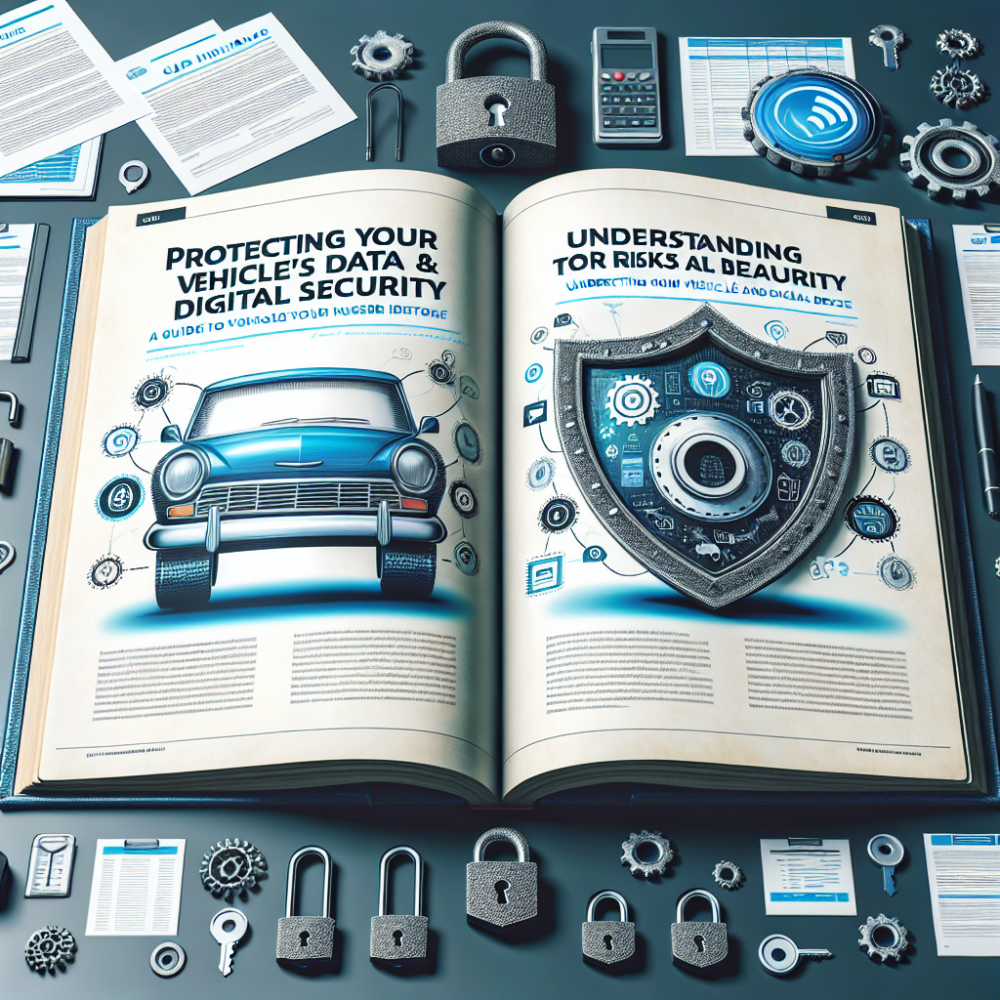Protecting Your Vehicle's Data: A Guide to Car Insurance and Digital Security

Posted on: Saturday, March 2nd, 2024
In an era where vehicles are increasingly connected to the internet, the risk of data breaches has significantly escalated, extending the domain of cybersecurity into the automotive industry. Car owners and insurers alike face new challenges in protecting personal and vehicle data from cyber threats. Comprehensive cybersecurity measures and innovative car insurance policies are becoming essential to safeguard against potential digital attacks. This guide highlights ten crucial strategies for enhancing digital security in relation to car insurance, ensuring both your vehicle's and your personal data remain secure.
1. Understand the Scope of Risks: Familiarize yourself with the types of data your vehicle collects and transmits, including location, driving habits, and even personal information stored on onboard systems. Awareness is the first step towards protection.
2. Opt for Insurers Offering Cyber Protection: When shopping for car insurance, look for policies that include coverage against cyber threats. This can include compensation for damages caused by hacks, data breaches, and other digital risks.
3. Regular Software Updates: Ensure your vehicle's firmware and software are regularly updated. Manufacturers frequently release patches for security vulnerabilities that, if left unaddressed, could be exploited by hackers.
4. Secure Wireless Connections: Be cautious of connecting your vehicle to public Wi-Fi networks, which are often unsecured and could serve as entry points for cyber attackers. Use a VPN when necessary to enhance security.
5. Implement Strong Authentication: Utilize vehicles that come with robust authentication mechanisms, such as biometric verification or multi-factor authentication, to prevent unauthorized access to your vehicle's data systems.
6. Data Encryption Techniques: Advocate for encryption of your vehicle’s data, both at rest and in transit, to protect sensitive information from being intercepted or misused by malicious parties.
7. Periodic Security Audits: Regularly conduct or request cybersecurity audits on your vehicle’s systems to uncover any vulnerabilities and address potential threats before they can be exploited.
8. Privacy Settings Management: Review and adjust the privacy settings on your vehicle's systems to limit the amount of data shared with manufacturers and third-party services, minimizing exposure to data breaches.
9. Awareness and Training: Stay informed about the latest cybersecurity trends and threats targeting vehicles. Consider attending workshops or training sessions on automotive cybersecurity for heightened awareness.
10. Incident Response Plan: Have a clear action plan in case of a data breach or cyber-attack, including steps to contain the breach, assess and mitigate damages, and notify affected parties as required by law.
By integrating these cybersecurity measures with comprehensive car insurance policies that specifically address digital risks, vehicle owners can significantly enhance their protection against the increasingly sophisticated landscape of cyber threats. Engaging in proactive prevention, staying informed about potential vulnerabilities, and choosing insurance products that reflect the modern digital challenges can provide both peace of mind and tangible security in the digital age.